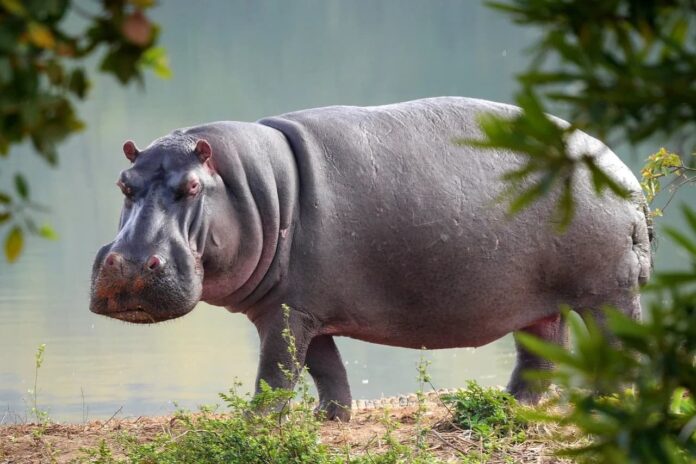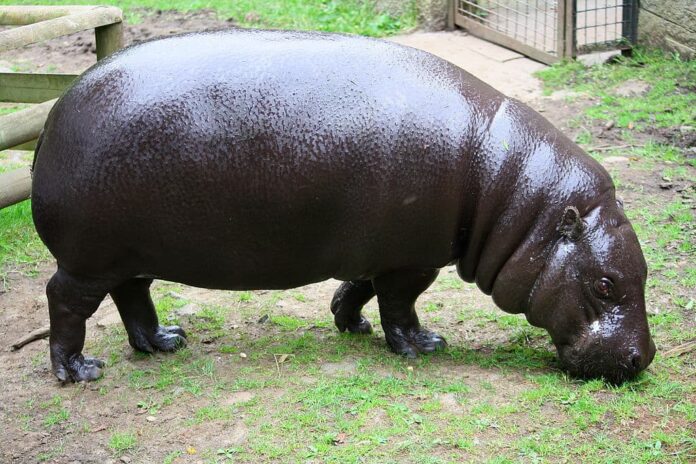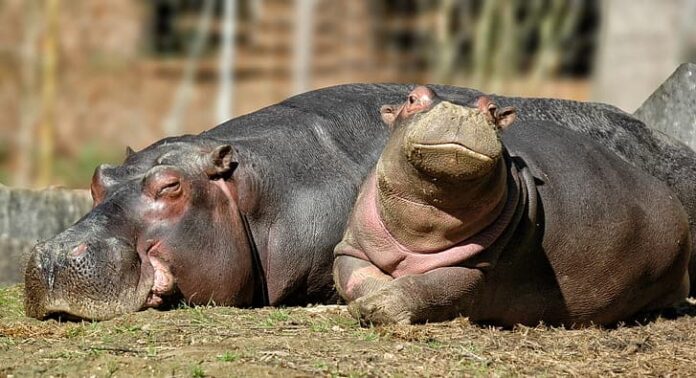Hippo or hippopotamus is a huge semiaquatic mammal with aggressive behavior and a large body. There are 2 living hippo species today, and we are going to discuss several things about them today. Hippo is the third largest land mammal in the world, and they are fascinating creatures; with waterproof skin and more. From the barrel-shaped bodies to the bizarre teeth and bites, you will learn about them all below.
1Common Hippo

Also goes by the name Nile hippopotamus or river hippopotamus, common hippopotamus is the third largest land mammal in the world. You can recognize a hippo from anywhere with its barrel-shaped torso and large canine tusks. These long sharp canines are one of the things that they use to scare away predators and rival hippos. Just so you know, one bite from these long canines can cut a human body in half.
A common hippo has hairless skin that is brownish-red or gray with pink areas on the face. An average adult common hippopotamus can weigh up to 1,500 kilograms for bulls (males) and 1,300 kilograms for cows (females). While being heavy and large, these large animals can run up to 30 kilometers per hour at a short distance.
Habits & Habitats
During the day, hippos keep themselves cool and hydrated by staying in the mud or water with their groups. In fact, they spend a lot of time submerged in the water. Hippos’ eyes and nostrils protrude above the head which enables them to breathe and see while partially submerged in water. They usually emerge at dusk to graze on grasses, and they do that solitarily. Despite the canines and size, hippos are actually herbivores so they feed on a variety of plants. Their diet consists almost entirely of grass as well as aquatic plants. Each night, a hippo can eat around 40 kilograms of grass before they go back into the water at dawn.
Habitat-wise, the common hippopotamus population spreads out through Sub-Saharan African countries. As you probably already know, hippos inhabit areas with water such as lakes, mangrove swamps, and rivers. At the same time, they can also be found in estuaries sometimes. These large land mammals prefer areas with shallow and slow-moving water where they can chill and float all day. Bulls are very territorial, and they preside a stretch of water and a group of 5 to 30 cows and calves.
Threats
The population of the common hippos is not doing well either due to habitat loss, human-hippo conflicts, and poaching. Poachers hunt them for their fat, ivory teeth, and meat while deforestation affects their habitats. As I mentioned above, male hippos are very territorial and they react aggressively to intruders in their territory. When human boaters enter their territory, they have a high chance of getting attacked by hippos. Sometimes hippos also wander into human territories such as farmlands to feed on their crops. All these conflicts usually result in the hippo being killed, and these conflicts are also very common.
2Pygmy Hippo

As for this species, it is the only living member of the family Hippopotamidae. Pygmy hippopotamus shares a lot of features with their relative common hippopotamus. Not different from each other, they also have stocky bodies with hairless brownish or gray skin. Sharp canines and nocturnal habits of grazing at night are their other common traits. The different area that differentiates them from the common hippos is their slightly smaller size.
Adult pygmy hippos stand about 75 to 100 centimeters tall only, weighing only from 180 to 275 kilograms. Being smaller, pygmy hippopotamus are generally docile so they are not dangerous to humans at all. While common hippos have two or three pairs of incisors, the pygmy hippopotamus only has one.
Habits & Habitats
Unlike common hippos, pygmy hippos’ eyes and nostrils do not protrude from their heads. Simply because they don’t spend the majority of their days chilling in the water like their cousins do. What they do have are narrower feet with less webbing toes that help them walk on the forest floor. However, they live the same solitary life, except for the mother with an offspring or breeding pairs. That is not all, they also have better tempers as they tend to ignore each other rather than fight when they meet. When the night comes, pygmy hippos will come out to graze on leaves in the forests.
When it comes to habitats, pygmy hippopotamus live near forests and swampy areas. Along with that, they are only found in the rainforests of West Africa. Where they live, they will rest in the same spot for several days in a row before moving to a new spot. On hot days, they rest in the cool mud or in the burrow of another animal. Sometimes they also dig a burrow by themselves as well. Pygmy hippos are also herbivores, and they feed on broad-leaved plants, ferns, fruits, and grasses they can find in the forests. They only spend around 6 hours foraging for food, and the rest sleeping.
Threats
Pygmy hippos are classified as Endangered due to deforestation which leads to their habitat loss. The forests that they live in have been subjected to logging to make room for agriculture and human settlements. Even the rivers where they swim are also now polluted by humans. Another major threat to their population is predation by humans such as hunting for bushmeat and poaching. There are less than 3,000 individuals in West Africa currently.
Related Post: 3 Camel Species In The World




